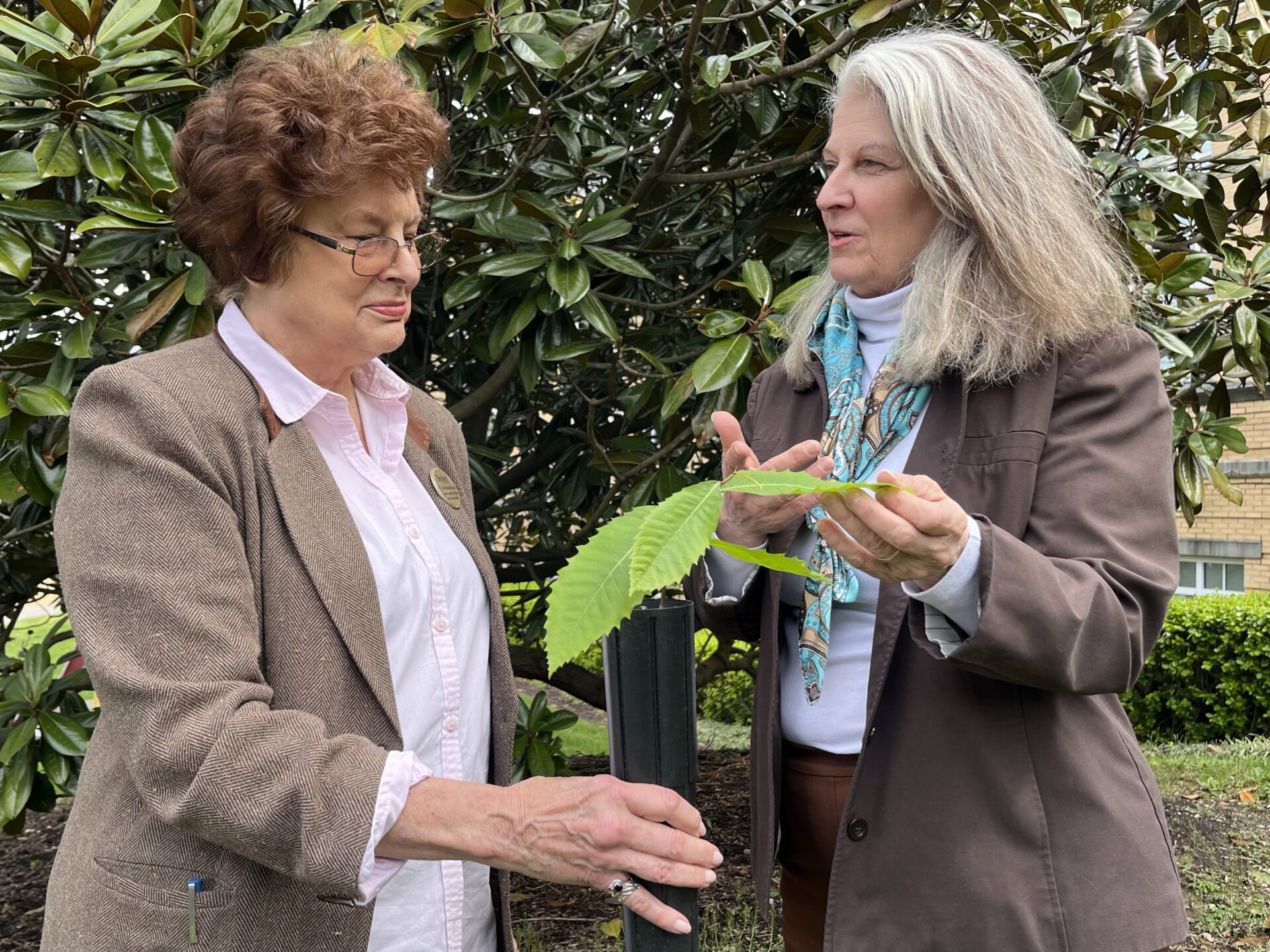Imagine trees more than 100 feet tall stretching across the skyline of Appalachia; families resting in the shade down below or collecting husks bursting at the seam with chestnuts.
Before the 1900s, sights like these weren’t just imaginary. American chestnuts once reigned supreme in Appalachia, populating forests in 13 present-day states.
But things changed at the turn of the 20th century with the arrival of a new disease: chestnut blight.
“In the early part of the century, a strain came in that affected the chestnut tree, and chestnut trees began to die,” said Sylvia Shurbutt, director of Shepherd University’s Center for Appalachian Studies and Communities.
“By the end of the century, we had virtually no standing chestnut trees in most places,” she said. “The chestnut tree does still live. … [But] the tree will grow for a bit, and then it will die. It will contract the blight.”
According to Shurbutt, chestnut trees were a pivotal part of pre-Civil War Appalachian history.
Chestnut wood helped build log cabins and household furniture. Chestnut forests fostered regional biodiversity. Even chestnuts themselves were a staple of eighteenth and nineteenth-century cuisine.
That’s why Shurbutt and the Center for Appalachian Studies jumped at the opportunity to help repopulate the American chestnut.
“We really want to engage our students and the community in what I think is probably one of the most important and significant things and gifts that we could certainly give,” she said. “That is to bring back an iconic tree, a tree that was the symbol of Appalachia, a tree that was at the heart and soul of what Appalachian stood for.”
The project came to the Eastern Panhandle with the help of Susan Thompson, a graduate student in Appalachian Studies at Shepherd University and an affiliate of West Virginia’s chapter of the American Chestnut Foundation.
Photo Credit: Randal Stewart
Thompson began the local project last year, when she rallied together a team of community members to plant hybrid chestnut trees at a local farm.
These trees were hybridized with Chinese chestnut trees, which made them more resistant to the blight. Now, Thompson’s team aims to replant pure American chestnuts, with a little help from an ecological ally.
“When it has a symbiotic relationship with mycelium, which is the plant that a mushroom grows off of — it’s all these white tendrils. Sort of imagine how the internet has threads going in every direction and connections. It’s like that, the threads going in every direction,” she said.
Mycelium then works with chestnut trees to more efficiently capture resources.
“They connect with the tree roots, and they spread out another 50 feet,” Thompson said. “You may have 80 feet of area that a tree can collect nutrients and water.”
While environmental interventions like these support early growth in American chestnut trees, conservationists are still grappling with how to best protect trees from the threat of chestnut blight.
Finding a cure to the disease is a work in progress, and scientists are looking for answers in the genes of chestnut trees from around the world.
In the meantime, one new strategy has helped extend the lives of ailing trees. It involves taping a package of soil around an infected segment of the tree for months on end, which blocks the disease’s spread.
This is not a catch-all solution, because it doesn’t prevent new infections, and it is harder to use on big trees. More than anything, scientists need more information on how the disease works, and American chestnut resiliency more broadly.
Photo Credit: Jack Walker/West Virginia Public Broadcasting
This, again, is where Thompson comes in.
Thompson is creating a website for a new citizen science project that involves documenting the life cycle of local American chestnuts online, from planting to infection to treatment. That way, researchers have more information on what works and what does not.
“It’s bringing together minds from all over the country. Potentially, we can have people from all over the world,” she said. “But we’re first trying to bring together a group of people in Appalachia who know where these trees are, who can keep an eye on them and provide data about them.”
By engaging with volunteers on an online project, Thompson said she and other self-described “chestnutters” can also offer advice on how to treat infections and protect the species as a whole.
Thompson said the project has good traction so far, but it will take time for Appalachia to see the chestnut forests that were widespread centuries ago.
Still, Thompson said she and other conservationists are excited by the possibilities American chestnut reforestation provides. This includes protecting Appalachian ecosystems, and even combating global warming.
“These trees are out there. We know we have this big problem to solve with cooling the Earth. We have all these people who are excited about chestnuts,” Thompson said. “I’d like to see people join our group.”
“I’d like to see chestnutters making the world cooler,” she added.
To learn more about American chestnut reforestation in West Virginia, visit chestnutters.org.
